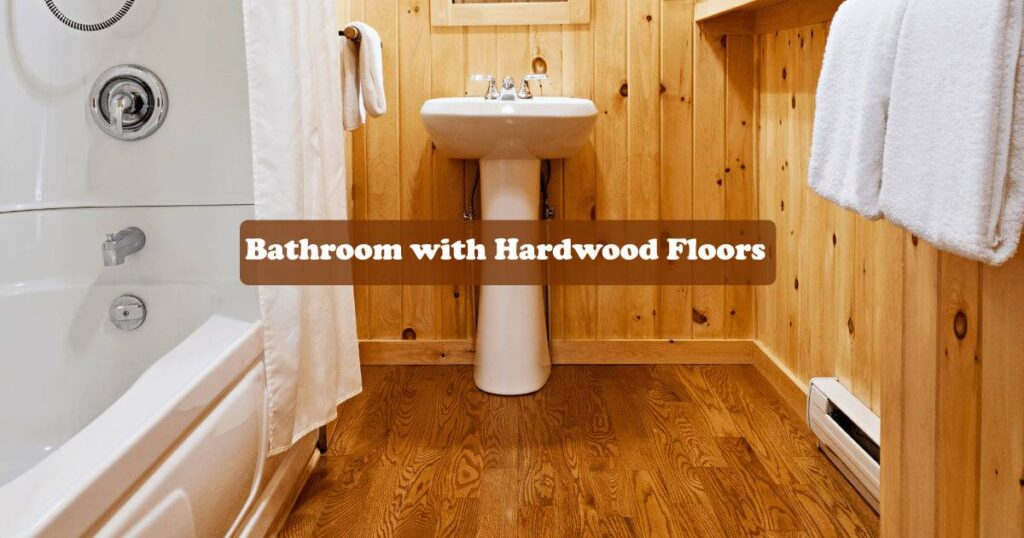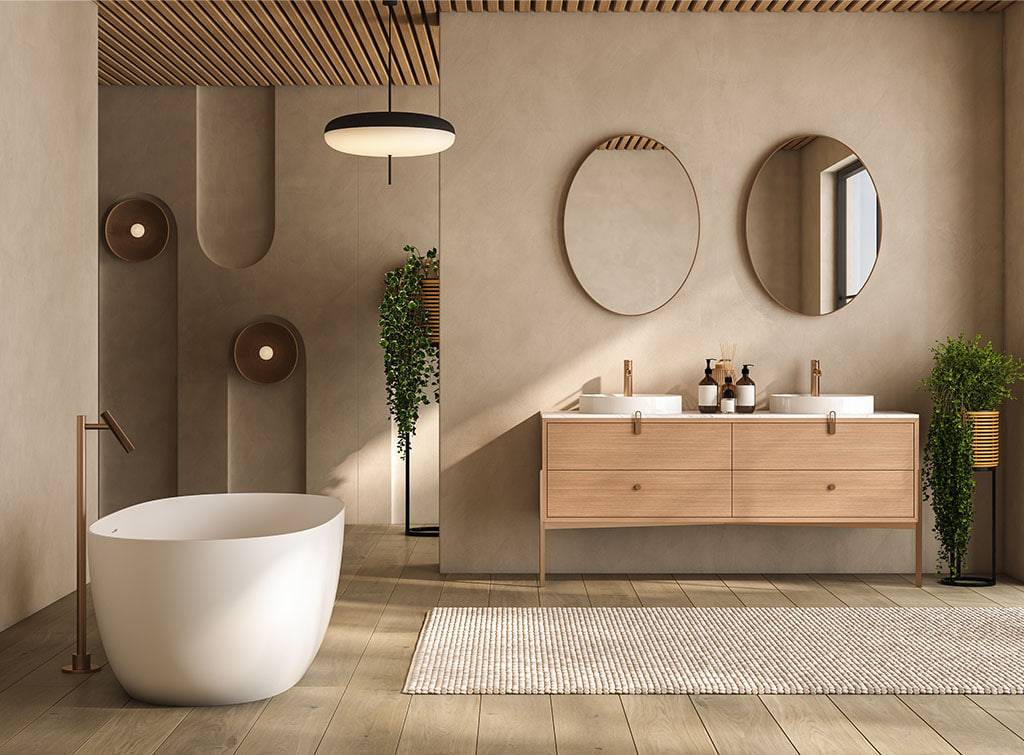Clawfoot tub and rich hardwood floors? It sounds like a spa retreat at home! But before you dive headfirst into a bathroom renovation, there are some important considerations for that wood flooring. While it creates a stunning look, hardwood isn’t always the most practical choice for bathrooms.
This guide will explore the challenges of wood flooring in high-moisture environments. We’ll also delve into which wood types hold up best, and discuss alternative solutions to achieve that luxurious bathroom vision.
Craving a luxurious bathroom retreat, but worried about real wood flooring? Dex Flooring can help! We offer a wide variety of beautiful and functional alternatives that capture the essence of wood without the moisture headaches. From stunning wood-look tile to waterproof luxury vinyl plank, our experts will help you find the perfect flooring solution to bring your dream bathroom to life.
Schedule a free consultation today and explore your options!
Advantages and Disadvantages of Wood Flooring
Wood flooring’s timeless elegance is undeniable. It adds warmth, character, and a touch of luxury to any space. Homeowners are drawn to its versatility, boasting several advantages:
- Durability and Longevity: Properly cared for, wood flooring can last for decades, making it a worthwhile investment.
- Low Maintenance: Regular sweeping and occasional cleaning are all that’s needed to keep wood floors looking their best.
- Wide Range of Options: From rich mahogany to light oak, wood comes in a variety of species, stains, and finishes to suit any decor.
- Affordability: While some exotic hardwoods can be expensive, there are budget-friendly options available too.
However, wood flooring also has some drawbacks to consider:
- Susceptible to Moisture: Wood naturally absorbs moisture, which can lead to warping and water damage, especially in high-humidity areas like bathrooms.
- Prone to Scratches and Dents: Softwoods and high-traffic areas can show wear and tear more easily.
- Needs Refinishing: Over time, wood floors may need to be refinished to maintain their original luster.
- Noisy: Compared to softer materials like carpet, wood flooring can be noisier underfoot.
Weighing the advantages and disadvantages of wood flooring will help you decide if it’s the right choice for your needs and lifestyle.
Wood Floors in the Bathroom: A Risky Romance?
While wood flooring can create a stunning bathroom retreat, its love affair with moisture is a rocky one. Bathrooms, with their constant humidity and potential for spills, present a big challenge for this natural material.
“Wood’s porous nature makes it susceptible to absorbing moisture,” explains Micetich, home care expert at Angi. “This can lead to warping and ultimately, water damage that necessitates replacement.”
So, hardwood floors in the bathroom might not be the best long-term solution. But fear not! We’ll explore alternative solutions to achieve that luxurious bathroom feel without sacrificing functionality.
Wood Alternatives for Your Bathroom Oasis
Dreaming of a spa-like bathroom haven with rich wood floors? Don’t ditch your vision just yet! While traditional hardwood might not be the most practical choice, there are fantastic alternatives that capture the essence of wood without compromising functionality.
“The key is finding materials that can handle moisture,” explains Micetich, home care expert at Angi. Here are some top contenders:
- Engineered Wood: Offering a similar look and feel to hardwood at a more wallet-friendly price, engineered wood boasts improved water resistance, making it a more bathroom-friendly option.
- Wood-Look Tile: The popularity of wood-look tiles has soared for good reason! They come in a wide range of styles and prices, mimicking the warmth of wood with the durability of tile. Perfect for withstanding the constant moisture in bathrooms.
- Luxury Vinyl Plank (LVP): Micetich’s favorite for its affordability and water resistance, LVP offers a stunning wood aesthetic without breaking the bank. Plus, the variety of colors and styles allows you to customize your bathroom’s look effortlessly.
Remember, taking the time to choose the right alternative will ensure a beautiful and long-lasting bathroom floor. Explore your options, prioritize functionality that complements your design goals, and get ready to step into your dream bathroom!
Conclusion
So, while wood flooring creates a stunning look, its vulnerability to moisture makes it less than ideal for bathrooms. Luckily, there are fantastic alternative solutions that offer the warmth and beauty of wood with the functionality needed for high-moisture environments. Explore your options, prioritize features that suit your lifestyle, and create the perfect bathroom retreat!
FAQs
Can I use any type of wood flooring in my bathroom?
Traditional solid hardwood is not recommended for bathrooms due to its moisture sensitivity. However, engineered wood offers improved water resistance and can be a suitable option for some bathrooms with proper ventilation and moisture control.
What are the best wood alternatives for bathroom flooring?
- Engineered wood: A more water-resistant option that replicates the look of hardwood at a lower cost.
- Wood-look tile: Offers the beauty of wood with the durability and water resistance of tile.
- Luxury vinyl plank (LVP): An affordable and water-resistant option that comes in a variety of wood looks.
What other factors should I consider when choosing bathroom flooring?
- Slip resistance: Especially important in areas like showers and around tubs.
- Ease of maintenance: Look for flooring that’s easy to clean and maintain.
- Underfoot comfort: Consider the warmth and noise level of different flooring options.
I still have my heart set on wood flooring in my bathroom. Are there any precautions I can take?
While not ideal, there are ways to mitigate risk. Ensure proper ventilation, clean up spills immediately, and use moisture-resistant sealants. However, be prepared for potentially more maintenance and the possibility of needing to replace the flooring sooner than with other options.


